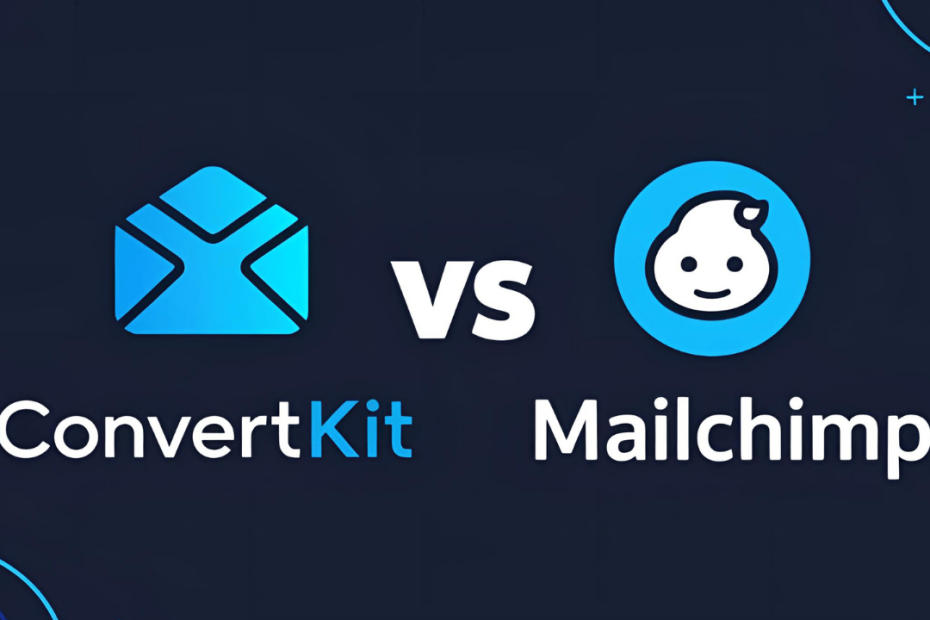Email marketing continues to be one of the most powerful digital marketing strategies, and in 2025, the competition between platforms is fiercer than ever. Among the top contenders are ConvertKit and Mailchimp, each offering unique features designed to grow subscriber lists, increase engagement, and boost ROI.
If you’re struggling to decide between the two, this in-depth comparison of ConvertKit vs Mailchimp in 2025 will guide you through the key differences, pros and cons, pricing, automation features, analytics, and more.
Table of Contents
- What is ConvertKit?
- What is Mailchimp?
- ConvertKit vs Mailchimp: Feature Comparison
- Email Automation
- Ease of Use
- Design and Templates
- Audience Management
- Integrations
- Analytics and Reporting
- Deliverability
- Pricing Comparison
- Which One Is Right for You?
- Final Verdict
- Meta Description
- Target Keywords
- Tags
What is ConvertKit?
ConvertKit is an email marketing platform tailored for creators — bloggers, podcasters, YouTubers, and digital marketers. It focuses on simplicity, automation, and monetization features that help creators grow their audiences.
Key Features:
- Visual automation builder
- Subscriber tagging and segmentation
- Landing page and form builder
- Integrations with platforms like Teachable, Shopify, and WordPress
- Paid newsletter functionality
- Creator-focused support
What is Mailchimp?
Mailchimp is a household name in email marketing with tools that cater to businesses of all sizes. It’s known for its robust marketing suite, design options, and advanced features.
Key Features:
- Email builder with hundreds of templates
- AI content optimizer
- Marketing CRM and audience insights
- Multi-channel campaigns (email, social, postcards)
- Landing pages and websites
- E-commerce integrations
ConvertKit vs Mailchimp: Feature Comparison
| Feature | ConvertKit | Mailchimp |
|---|---|---|
| Target Audience | Content creators | Small to medium businesses |
| Ease of Use | Very user-friendly | Moderate (more complex options) |
| Email Automation | Advanced, visual workflows | Extensive, logic-based workflows |
| Templates & Design | Minimalist, limited options | Rich template library |
| Landing Pages | Built-in with forms | Advanced, customizable |
| A/B Testing | Limited | Advanced with multivariate testing |
| Reporting & Analytics | Basic metrics | In-depth analytics with AI insights |
| Pricing Flexibility | Starts cheaper | More scalable but can be expensive |
| E-commerce Integration | Shopify, WooCommerce | Deep integrations with e-commerce |
| Deliverability Rates | High (96%+) | High (94%+) |
Email Automation
ConvertKit:
ConvertKit excels in automation with its visual workflow builder. You can create custom journeys triggered by subscriber actions, purchases, or behaviors.
Mailchimp:
Mailchimp offers more complex logic-based automation. You can build intricate customer journeys with multi-step branching.
Ease of Use
ConvertKit is ideal for beginners with a clean interface and streamlined user experience. Mailchimp, while still user-friendly, can feel more cluttered due to its wide range of features.
Design and Templates
Mailchimp wins here with hundreds of customizable templates, drag-and-drop functionality, and AI-assisted content. ConvertKit sticks to a minimalist approach with fewer templates to keep emails simple and text-based.
Audience Management
Mailchimp provides a built-in CRM for in-depth segmentation and behavior tracking. ConvertKit uses tags and segments, making it simpler but less data-rich.
Integrations
- ConvertKit Integrations: Teachable, Stripe, Shopify, WordPress, Zapier
- Mailchimp Integrations: Squarespace, Magento, Shopify, Stripe, Facebook, Instagram, Google Ads
Mailchimp integrates with a wider range of platforms but ConvertKit covers the essentials for creators.
Analytics and Reporting
- ConvertKit: Open rate, click rate, conversion, unsubscribes
- Mailchimp: Behavior analytics, campaign performance, ecommerce tracking, heatmaps, predictions using AI
Deliverability
Both platforms boast impressive deliverability rates. ConvertKit has slightly higher success due to cleaner design and text-based emails that avoid spam filters.
Pricing Comparison (2025)
ConvertKit:
- Free Plan: Up to 1,000 subscribers
- Creator Plan: $15/month for up to 300 subscribers
- Creator Pro: $29/month and up
Mailchimp:
- Free Plan: Up to 500 contacts
- Essentials: Starts at $13/month
- Standard: $20/month and up
- Premium: $350/month (for large teams)
Note: Mailchimp charges based on contacts + email volume. ConvertKit charges based on subscribers only.
Which One Is Right for You?
| If You Are… | Choose… |
| A content creator or solopreneur | ConvertKit |
| A business looking for robust marketing | Mailchimp |
| Wanting simple automation | ConvertKit |
| Needing detailed analytics | Mailchimp |
| On a tight budget and growing list | ConvertKit |
| Running multi-channel campaigns | Mailchimp |
Final Verdict
ConvertKit is perfect for creators who want to keep things simple, authentic, and creator-focused. Its ease of use and automation features make it ideal for bloggers, coaches, and course creators.
Mailchimp, on the other hand, is more robust and versatile. It’s perfect for growing businesses looking for deep insights, multiple marketing channels, and advanced testing capabilities.
Whichever tool you choose, both platforms are powerful enough to handle your 2025 email marketing strategy.
